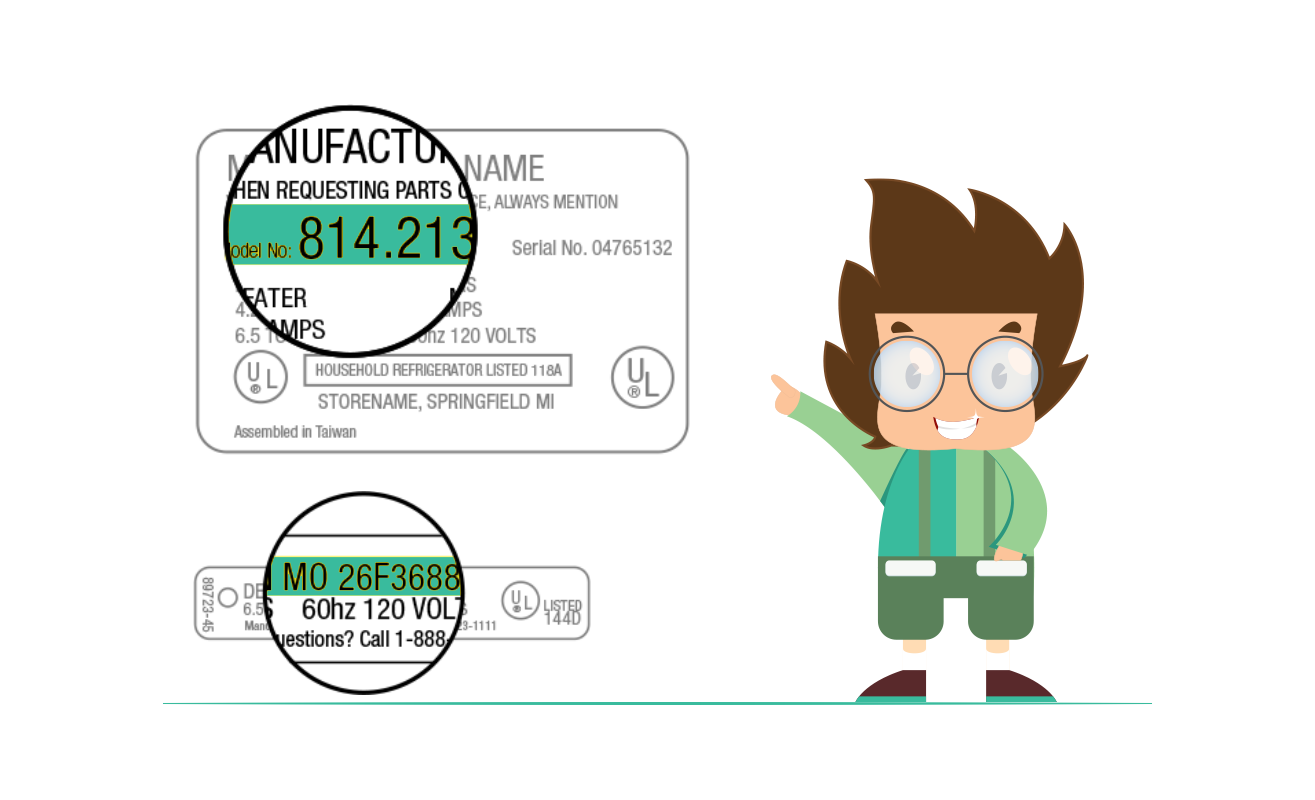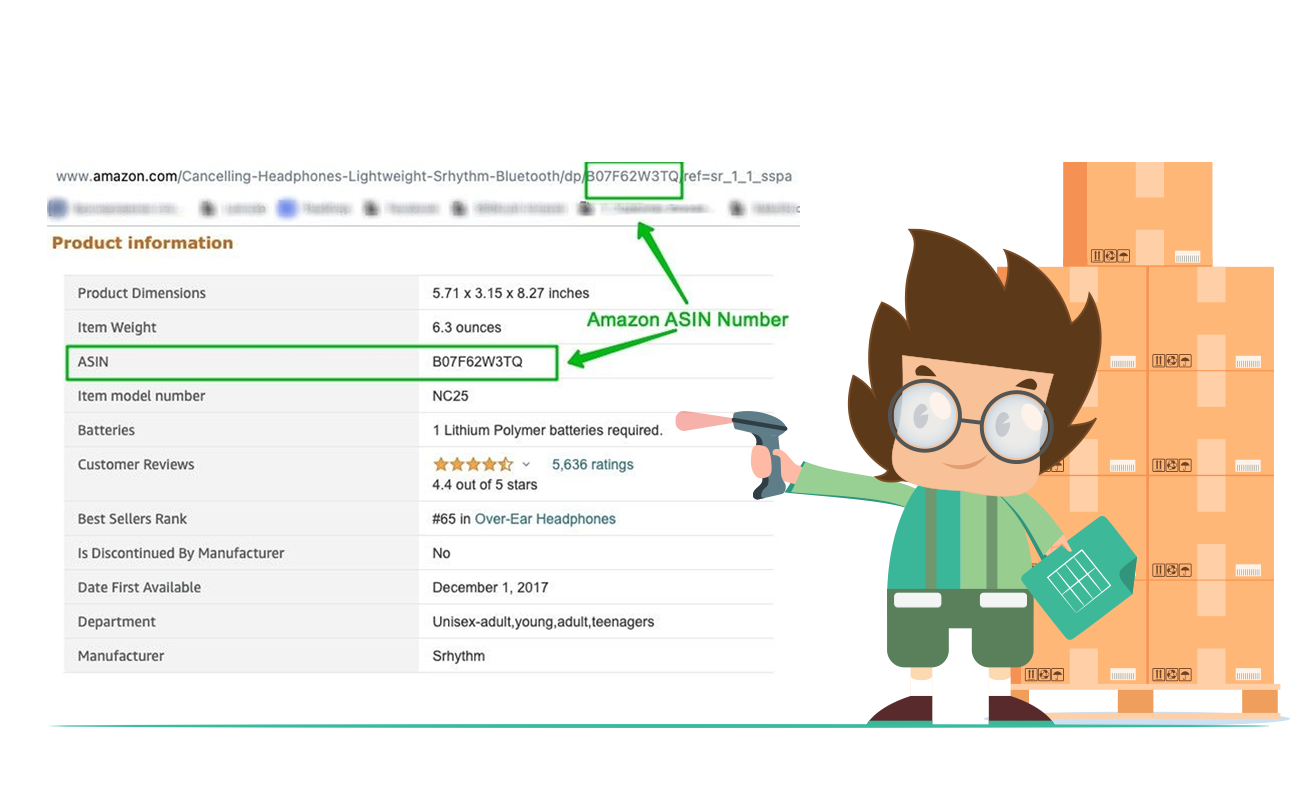Full Guide About SKU, MPN, and ASIN
I’ve seen that the majority of new sellers are unaware of the differences between an SKU, MPN, and ASIN, and how they connect. To properly get the essence of selling on Amazon or anywhere else, it’s imperative to understand these Codes like SKU. Let’s begin with the concepts and dive into everything that has crossed your mind.
What Exactly is an SKU (Stock Keeping Unit)?
An SKU (stock keeping unit) is a special alphanumeric designation that retailers allocate to products to improve the efficiency of controlling their inventory.
SKU numbers typically have between 8 and 12 characters, with each character standing for a distinctive quality of the product it identifies (such as the item’s type, brand, style, or department).
Uses For SKU Numbers
SKU numbers are used by retailers to keep track of their stock and sales, but they may also be used to estimate future demand and sales, as well as to tailor which products are recommended to customers both in-person and online.
1. Reliable inventory tracking
SKUs can be used to track inventories in general since they are used to track a product’s attributes. For instance, a retailer can track a product’s availability and overall stock levels across numerous retail outlets using SKU numbers.
2. Predicted sales
SKU numbers enable retailers to precisely manage inventory levels, forecast sales, and foresee which goods they will need to stock up on to satisfy client demand. Just be careful not to carry only the best-selling things. Customers might still want those products even if they may move less quickly than another inventory, and if you cease selling them entirely, you risk losing them as a client.
3. Make money off profitable products
The most popular (and least popular) products in a retailer’s line of business can be identified with the aid of a correct SKU nomenclature.
Retailers can create compelling product displays, window displays, and online pages and move those things even more quickly by knowing what kinds of products are the most in-demand at any particular period of the year.
4. Offer suitable product suggestions
The ability to monitor products using SKUs that correspond to a product’s attributes (type, fit, color, etc.) allows retailers to give their sales representatives access to information, which is a priceless resource.
If a customer requests a product that isn’t in stock, sales representatives can use the SKU number to look up related products that the consumer might also like.
5. Boost client satisfaction
SKU numbers make it more probable for retailers to have the products a consumer wants in stock because they assist retailers to predict the products they need to reorder (and when to reorder them).
Merchants can establish themselves as trustworthy source that customers can rely on to have the things, they need by reducing the number of out-of-stock items.
Difficulties That Arise from SKU Tracking
SKU tracking can be very difficult as your inventory expands. This implies that entering data into spreadsheets or any other computer software you might be using will take additional time.
Keeping track of merchandise at many places can be quite laborious. Confusion can be further increased by human error and sluggish reporting. It’s similarly crucial to remember that the likelihood of needing more labor increases with the amount of stock you have. That can wind up being expensive.
What is MPN Number?
Manufacturer Part Number is referred to as MPN. Manufacturers issue this special number to distinguish specific products. A product’s MPN typically consists of a string of numbers and letters. Manufacturers print MPNs and the barcode on products, therefore you may see instances of MPNs there.
Additionally, MPNs can be discovered in online databases, manufacturer websites, and catalogs. including the databases run by online marketplaces and comparison-shopping engines.
How to Find the MPN for Your Product
The majority of products will be printed with an MPN. Depending on the product, it can vary greatly where this is positioned. A code should be visible upon careful inspection of your merchandise; it is typically located on the back or underside of the object. Instead, the MPN may occasionally be listed in the product’s instruction manual or supplemental information notes.
Why Use MPNs, You Ask?
Improve Customer Product Discovery
Additionally, it dramatically improves how easily people can find your stuff. FBA sellers might not be aware of this, but adding the MPN can cause your goods to show up in both Google and Amazon search results. Your products may appear when customers Google part numbers, which is practically free advertising for you.
Customer Loyalty
Due to the nature of the items that need an MPN, enthusiasts, and professionals frequently search by MPN. These customers have highly particular needs, and if they discover a product is of good quality, they frequently buy many items.
Higher Conversion Rates
Customers have a plethora of options when it comes to Amazon purchases. However, if the product you’re selling is a perfect fit for their requirements, there’s a good probability that the customer won’t be persuaded by competing offerings.
A Lower Return
Less uncertainty exists over what clients will obtain when their individual needs are met. This translates to fewer returns, which is a crucial indicator for telling Amazon that your product is high-quality.
Improved Reviews
When a customer receives exactly what they wanted, they often express their gratitude, which gives them a certain sense of happiness. More reviews on your listing page will increase the social proof effect, which will increase consumer conversion.
What Is ASIN Number?
Is referred to as ASIN. The internal inventory structure of Amazon is organized using a 10-digit alpha-numeric code. Consider this: if every vendor on the marketplace utilized their own SKUs and ID numbering, Amazon would have a difficult time processing order.
The ASIN is only utilized by Amazon, as suggested by its name (and is frequently referred to as an “Amazon ASIN number”. You won’t need the number if you aren’t using the platform to sell things.
Why Does Amazon’s ASIN Number Matter?
The ASIN is crucial since it is used to maintain inventory, index catalog pages for site browsing and search, and serve as a reference for all of the company’s catalog data. Since there are more than 350 million items in the Amazon catalog, a standardized management system is not a luxury but rather a need for keeping track of everything.
At the end of the day, the ASIN number is significant because it makes it simpler for customers to find products when using search (by removing searches that return irrelevant results) and because it enables Amazon to track and manage the enormous volume of products that are listed on their website and stored in their various warehouses more effectively and efficiently.
How to Locate an ASIN on Amazon
There are three quick ways to locate an existing product’s ASIN on Amazon. Here is how:
– In the Product URL
The ASIN is displayed when you view a product URL on the Amazon website. Here is a URL for an Apple iPad as an illustration:
https://www.amazon.com/dp/B09G9LD3HC/ref=redir_mobile_desktop
The 10 alpha-numeric characters following the product name are the ASINs. It is in this instance that B09G9LD3HC Easy, right?!!
– In the Product Information
Even easier is to search for a product, click it, and then scroll down to the product information area to discover the ASIN. You can find a listing with the ASIN clearly marked in this area.
Which ASIN Lookup Tools Are Available?
Three of the most widely used examples are:
Synccentric
Vendors can use the program Synccentric to compare their product codes to Amazon’s product register. Traders may now easily locate the ASIN number on Amazon, saving effort and time.
Asintool
Traders wishing to sell products can find ASINs and other unique codes associated with those products using Asintool. You can do a single search query for one or more goods. The data results are accessible for download once the results have been generated.
SKU VS MPN, What is the Difference?
Retailers occasionally mix up the terms SKU and MPN. The primary distinction between an SKU (Stock Keeping Unit) and an MPN (Manufacturer Part Number) is how they are used. While MPNs are exposed to customers and are visible to search engines and marketplaces, SKUs are used by merchants or brands to keep track of inventory internally.
SKU is an offer, and ASIN is a specific product. As a result, one ASIN can include several offers and various SKUs. For that one ASIN, different vendors selling the same item may develop their own SKUs. While ASIN operates on a worldwide level, SKU operates at the seller level.
Multiple SKUs per ASIN
For example, you can have FBM (shipping from seller’s warehouse) and FBA (shipment from Amazon warehouse) offers for the same product. You can have many offers per product (multiple SKUs per ASIN).
Enter an existing ASIN, choose the product status (new), and add an SKU, a price, and a shipping method when creating a listing in order to create a new, additional SKU (add product). By using the FBA delivery option, you can also have more than one SKU per ASIN. The products will need to be delivered to Amazon warehouses with various FNSKU barcodes, and they will be given various SKUs.
New Generation of Solutions
Overall, the product SKU, MPN, and ASIN will be very helpful to you while you carry out different tasks for your business. It can assist with managing the demand for specific products, the structuring of your inventory, and many other things.
I hope this article has provided you with enough knowledge to begin your endeavor. To improve conversions and boost revenue, get a head start by employing solutions like New G Solutions.






Recent Comments